Put your mothballs and steel wool away. They don't deter mice, no matter what you've read on the Internet. Here I lay out what you really need to do to keep mice out of your house and how to get rid of them if they're already in there.
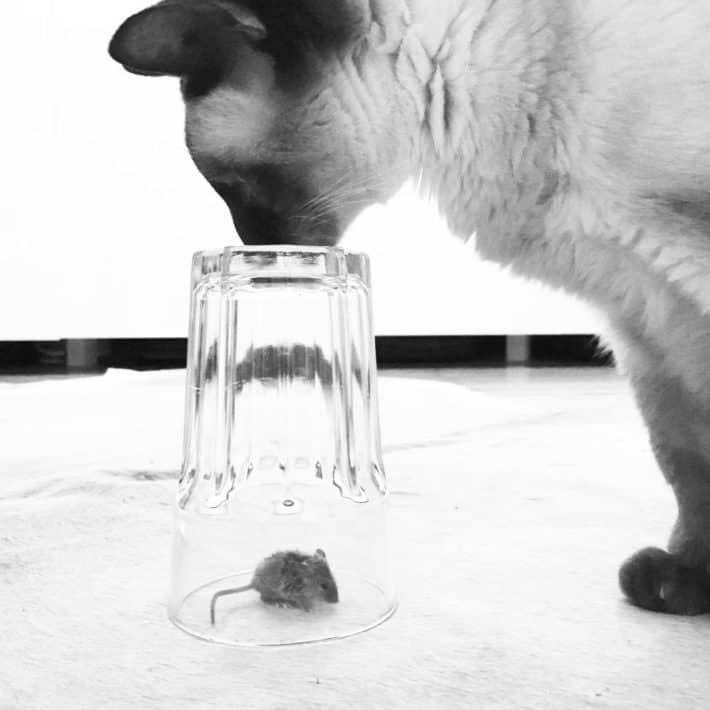
I speak from experience.
They've always arrived without invitation roaming around as if they pay the mortgage, eating stuff I leave on the counter, going to the bathroom behind the stove. I've spent a lot of time researching how to get rid of my family members but neither poison, bait or traps work. They keep showing up.
Mice? Now, those I know how to get rid of.
I also know how to get rid of flies outside using this simple bottle trap and the best fly bait.
If you have mice in your house you're not gross, or dirty or living in a hovel - you just aren't as smart as a mouse.
The BEST way to deal with mice is to not allow them in in the first place. They start looking for a cozy indoor home when nighttime temperatures start to dip in the fall so you need to get your house prepared by late summer.
Table of Contents
How to Keep Mice Out Of Your House
The best thing you can do to get rid of mice is to not let them in your house in the first place. Duh.
Let me say you're probably never going to make your house 100% mouse proof, but you can at least make it a challenge for them to get in.
For instance I found a big crack under the parging of my house beside a window. It was big enough that a pig could squeeze in, let alone a mouse.
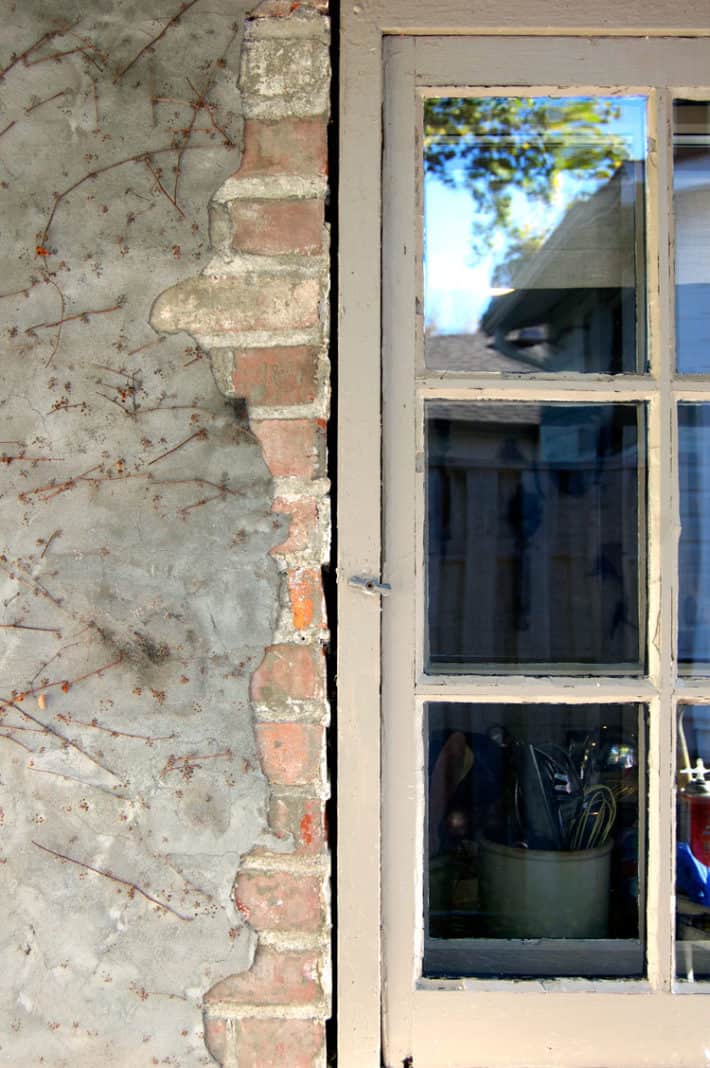
To keep mice out you need to go around the house looking for holes and cracks. And then ... you need to FILL THEM PROPERLY.
Mice can chew through concrete if they want to so steel wool is like a palate cleanser to them. It won't even faze them.
Find Mouse Entry Points
Mice can enter your home through a hole smaller than a dime.
Rats can enter your home through a hole the size of a quarter.
- Check the foundation for cracks.
- Rodents are greasy and when they squeeze into holes over and over they leave a dark mark around the hole or crack. Watch for that.
- Mouse poop around the windows and doors.
- Check for spaces around pipes and wires that enter your home.
- Stove and air conditioning vents both off the side of the house and the roof are often entry points for rodents.
- If you hear running around in your attic, chances are the nice are coming from somewhere on the roof. Check it.
- Look for gnaw marks. Both mice and rats will chew through wood to gain access to your house. Because they're complete a$$heads.
- Urine stains. Mice pee ALL the time and leave a trail. These pee stains can be seen with a black light. Buy a strong blacklight (UV) flashlight, turn the lights off and get ready to be horrified. Finding where the pee leads to can help you find where mice are coming in.
To Fill Foundation Cracks
How small of a hole can a mouse get through? If you can stick a pencil into it, a mouse can get into it too.
Here's what you need to do.
- Push a piece of metal (rod or crumpled wire) into smaller holes and then fill them with expandable spray foam like Great Stuff.
- Fill larger cracks with ¼" hardware cloth and then use the spray foam.
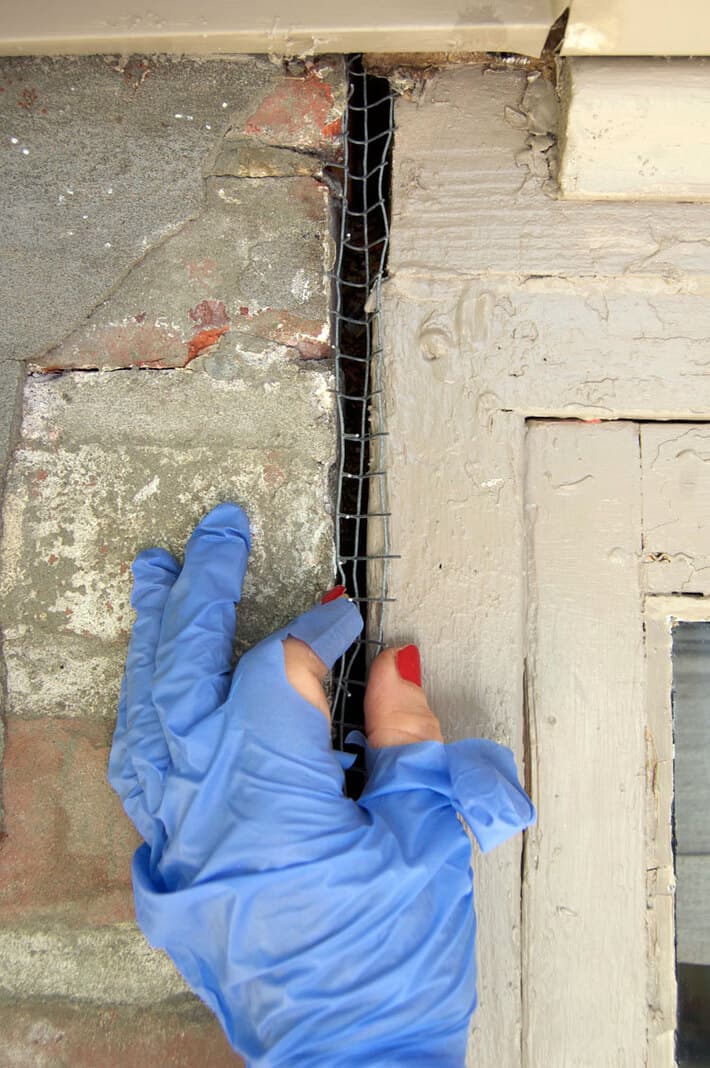
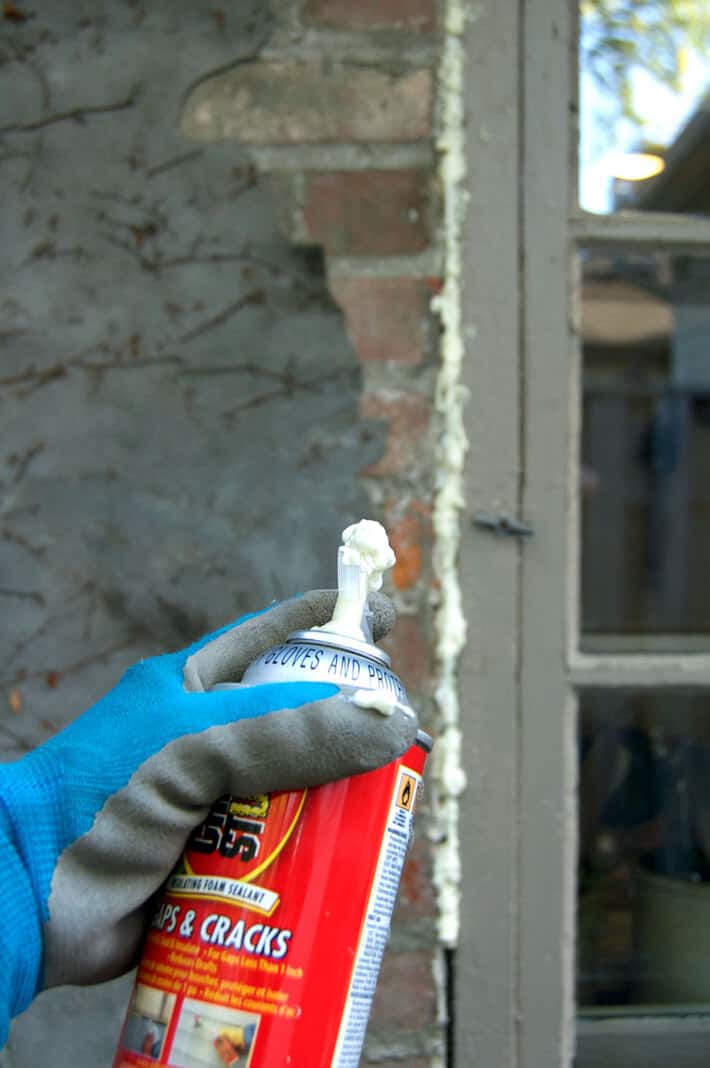
Handy Tip: Use gloves that are slightly more resilient than latex gloves.
3. After filling the crack with hardware cloth and spray foam, cut the excess foam off with a sharp knife when it's dried.
4. Do the same around pipes and cables.
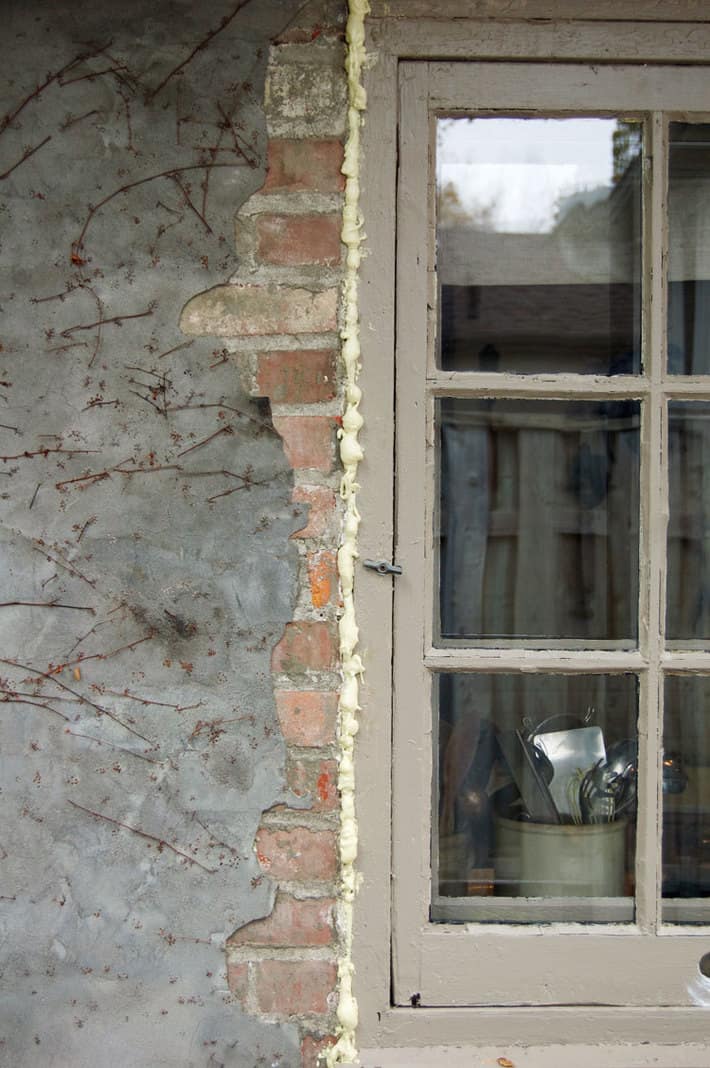
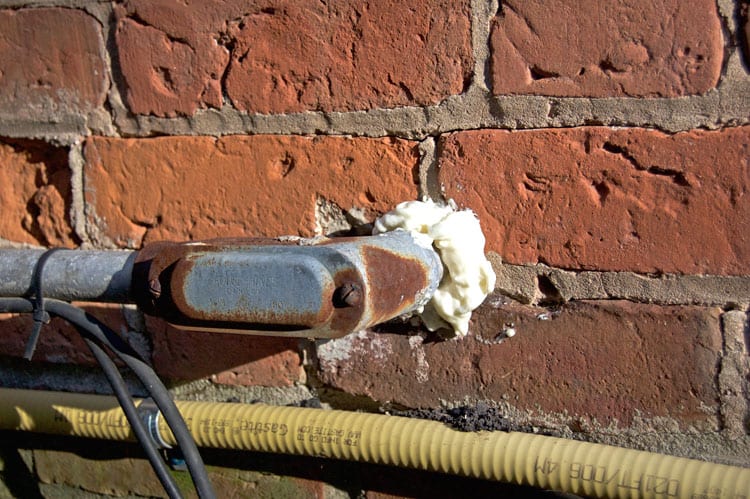
Keep your yard clean. Remove any garbage, leaves or clutter especially around your foundation. Just doing this - making your yard less habitable for mice - will go a long way to keeping them out of your home.
How to Get Rid of Mice
(once you have them)
Would you like to save this stuff?
- Poison
- Traps
- A Cat
- Poison is effective but it's also a slow, painful death for the animal. Plus there's a danger if you use open poison and have kids or pets in your house. Kids won't eat broccoli but they'll sure as shit eat mouse poison if you leave it out. I personally once drank an entire bottle of motor oil when I was a a kid. Yup.
What if your pet eats a poisoned mouse? The chances are low but know that your pet could become poisoned after eating a poisoned mouse. Mice can only eat a few grams of poison a day. Even if your pet ate the entire poisoned mouse it still wouldn't be enough to poison even the smallest dog. Around 56 grams of poison would need to be consumed by a very small dog to poison it.
**secondary poisoning like this is more common if you have barn cats that have to actually hunt for their food and might eat several mice in a day. House cats prefer to get their food in a bowl.**
- Traps are your best choice for eliminating mice that are in your house. You just have to decide which type of trap to use.
- Getting a cat REALLY will help your mouse problem. It will scare them from coming into your house, plus cats are natural mousers. A lot of dogs are as well.
Types of Mouse Traps
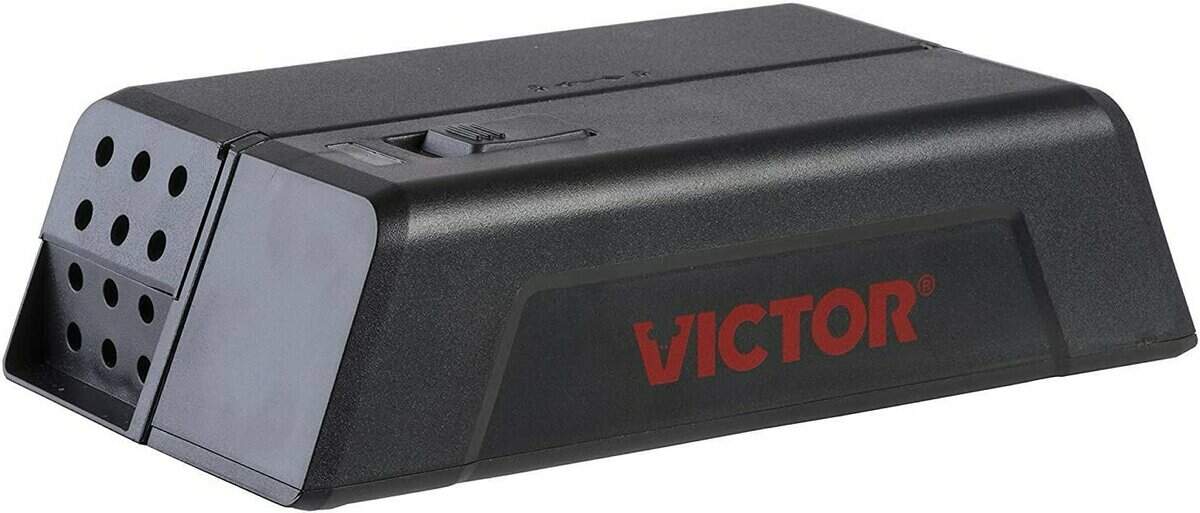
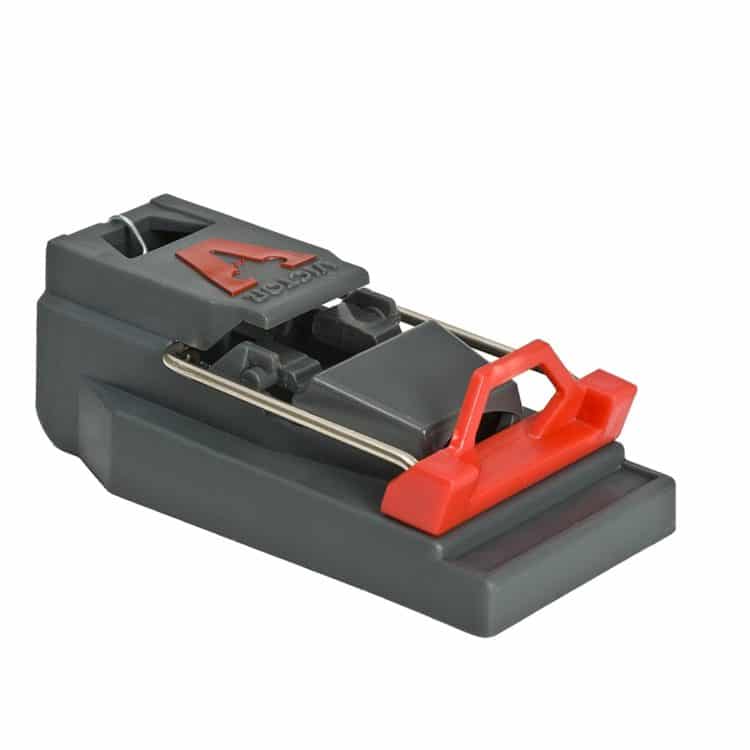
- ELECTRONIC MOUSE TRAPS
**Best Choice**
These Viktor electronic mouse traps are my favourite. They electrocute the mouse instantly and there is a 0% chance that it will only be maimed or hurt. Of all the kill traps, these are the most humane. - CLASSIC SNAP TRAP
**Best Choice**
If you don't want to put out the money for an electronic mouse trap, your next best bet is the classic, wood snap trap. They work better than anything else but they're also the most difficult to set and use. Don't worry about it though, I'm going to show you how to properly set a mouse trap.
- PLASTIC SNAP TRAPS
There are a few different new fangled plastic snap traps on the market. They're easier to set but I have found them less effective.
- LIVE TRAPS
Live traps like this are little Hotel Californias. The mouse goes in but it can't get out. They work, but require more commitment from you. Check traps often and road trip any you catch at least a mile from your house. GLUE TRAPS
**Worst Choice**
Avoid these at all costs. They're gross, sticky, messy and completely inhumane. These pads covered in ultra sticky glue trap render the mouse immobile until it either dies of thirst and starvation or until they struggle to get away, breaking their little feet or legs off. They're awful inventions.
So now you know that if you have mice you're going to need to either put down a contained bait station, or set a mouse trap.
What Bait to Use
Electronic traps work well with a bit of peanut butter smeared onto the back of it. Around the size of a pea is all you need.
Snap traps can take a multitude of baits. In order of effectiveness:
- A peanut wedged in the bait holder so the mouse has to work to get it out.
- A dried kernel of corn wedged into the bait holder. Put a dab of peanut butter on it too.
- Peanut Butter
- Jam
- Deli meat
- Soft stinky cheese - blue cheese for instance
How to Set a Mouse Trap
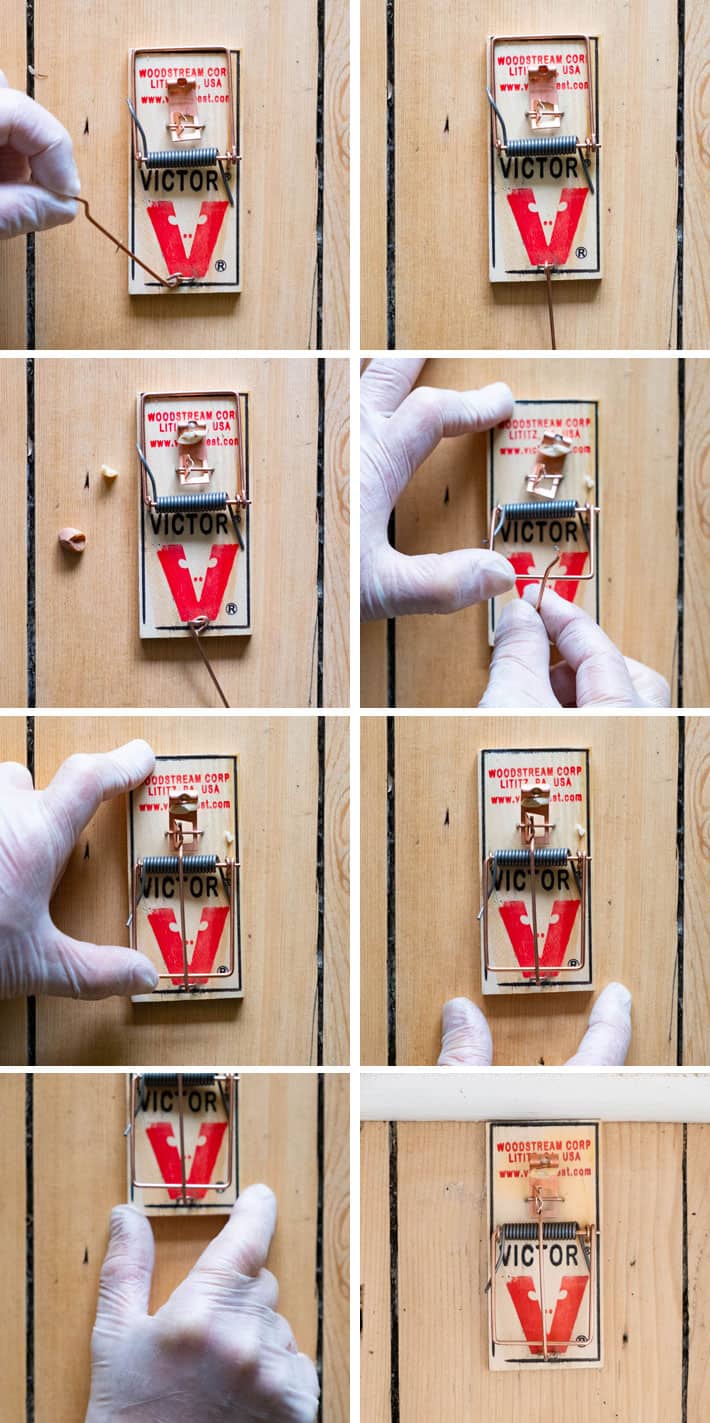
- Wear latex gloves when handling mouse traps and food to keep human scent off of them.
- Slightly bend the hook on the bait holder that holds the pin so it just barely holds the pin in place without setting off the trap. Be CAREFUL and keep your fingers out of the way. Doing this to your trap will give it a hair trigger to better catch mice. And fingers.
- Bait the trap with a *small* amount of bait. No food bigger than pea sized. The best bait is half of a peanut or a kernel of corn wedged under the teeth of the bait holder. Peanut butter can be your 3rd choice but the others are better because the mouse can't just lick it off and run away. With corn or a peanut they have to work on pulling it out which is more likely to set off the trap.
- Mice run along backs of cupboards and walls because it's dark and they feel safe there. Place the trap with the baited end against a wall so the mouse can only get at it from the left or right as it runs along the wall. This helps make sure the mouse is killed instantly because it's coming at the trap from the ideal direction.
- Put out a LOT of traps. Not just one or two. Put them everywhere you see mouse poop but away from where pets and kids can get at them.
Video of Setting a Mouse Trap
Are Mice Dangerous?
Yep.
Mice like chewing on things: wood, wires, food, cushions, heirloom vegetable seeds lovingly gathered and carefully stored in paper envelopes for future generations to come. Also noses. I have no actual proof but if presented with a nose I'm sure a mouse would chew on that as well.
- When mice chew on wood, drywall and electrical wires in your house. That means you'll either have an expensive repair in your future, or worse, a fire inside your walls.
- Mice mark their territory by peeing and pooping all over your house. Which is gross. But also a danger in terms of the viruses and diseases they carry.
- Mice have parasites on them because of their filthy habit of being mice. Ticks, fleas, and other parasites all come into your home with the mice.
If you do get a tick here's how to properly identify and remove it. Since we're talking about pests and all.
Final Tip on Mouse Control.
O.K., so 30% of all homes have mice in them. Some of them even have rats. I'm guessing you want to get rid of them.
Don't rely on only one method for controlling mice. Use everything you've got. Your whole arsenal. And don't let your guard down.
Mice are super suspicious but not of the opposite sex. Ever. They are constantly having mouse sex and making babies. Like, non-stop. So as long as there are mice in this world, there's going to be a chance that one or worse, TWO will get into your house and claim it as their love pad. By using two or three of these methods you'll have a good shot at keeping the population in your house down.
→Follow me on Instagram where I often make a fool of myself←
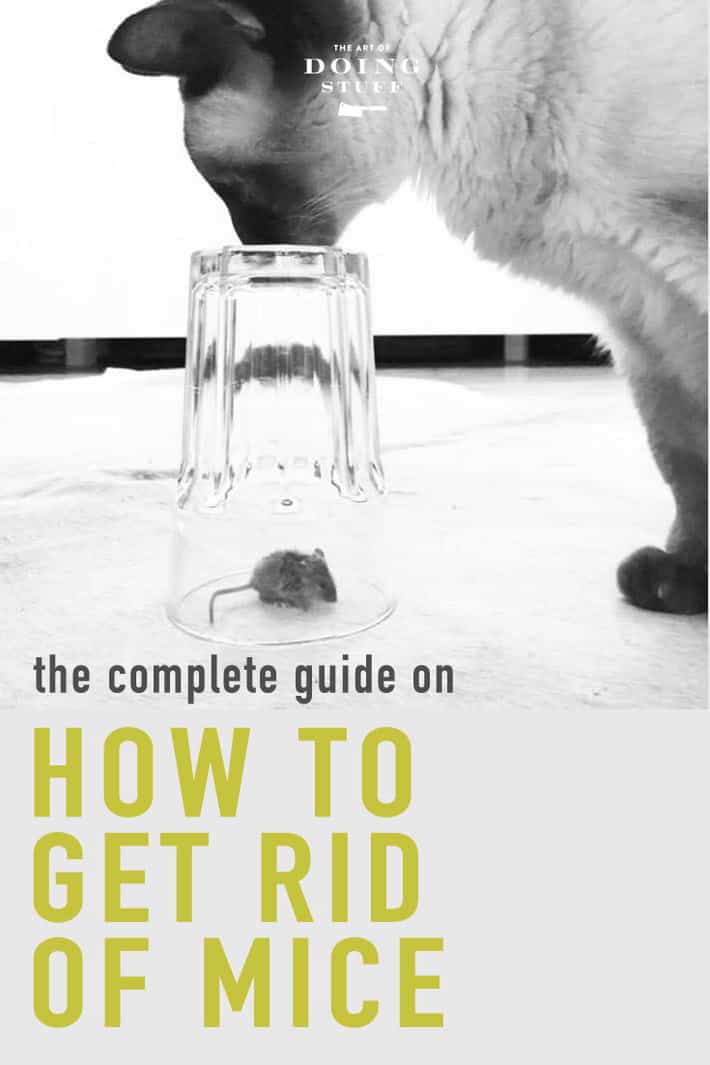


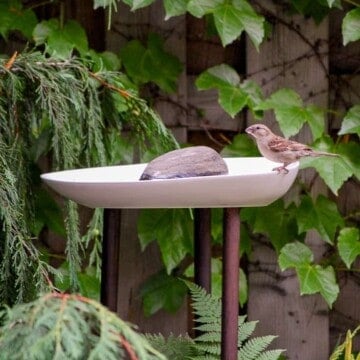
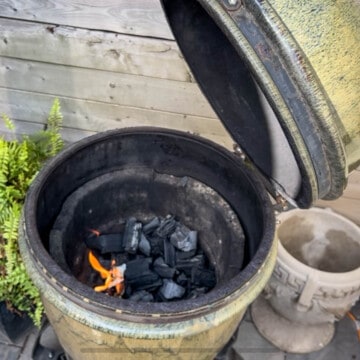

Jacqueline
Great advice! I had mice in my house 35 years ago and after getting a cat started to believe in the Tom and Jerry stories… After protecting all food they even started eating soap and candles. Life traps with fried bacon did the trick in the end.
But.
Do you have any solutions to get rid of carpenter ants who are looking for a new home in mine after their favorite old tree was taken down by a storm?!
CJ
Karen - I have found that mice do not in the slightest care about human scent - it must be an attractive scent to them because it means food and warmth. And if you set a number of traps, be sure to record all the locations and check regularly. It is NO FUN finding a sprung trap several days later or after the smell begins... Eeww.
Joan
My cats catch mice outside, bring them inside unharmed, and let them go. Once inside, they completely ignore them. I had one particularly bold, clever mouse that I could not catch until I baited the snap trap with a cheap piece of chocolate. My cats have also brought in a flying squirrel, a small rat snake, frogs, lizards, chipmunks, voles, and a crawdad. Only the crawdad did not survive.
CJ
Joan - Your house would be Heaven for some young kids - I would have LOVED it as a child. Not so much now, ha ha!!
Val Gordon
I found a few short-term ways of discouraging rodents by using mothballs/ Naphthalene, peppermint oil or dried peppermint leaves and an incense called anti-tobacco this one in particular they hate. Short-term methods are good when you hear them chewing on things in walls or ceilings
I also have recorded rats screaming, angry or in distress which they also hate and usually it will stop them chewing, they don’t seem bothered by electronic noise I’ve recorded
To safeguard vehicles I use peppermint oil spray with water inside the vehicle, rodents don’t like light, they like dark secret places so if your vehicle is parked for some time in the garage you can put the bonnet up. I also put mothballs or a scent deterrent on the ground underneath the parked vehicle especially near the motor where they are prone to chewing wiring
I’ve also noted two types of rats the common grey rat and a Norwegian rat the grey rat likes peanut butter and cheese the Norwegian rat tends to ignore those and prefers fruit or sweet things
If I clean surfaces where they have been I use hot water with some eucalyptus and peppermint oil
Good luck with the anti rodenting